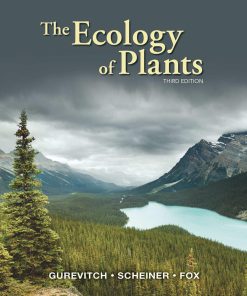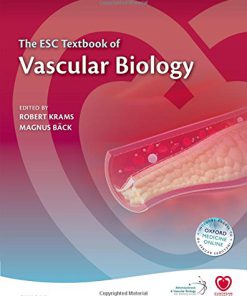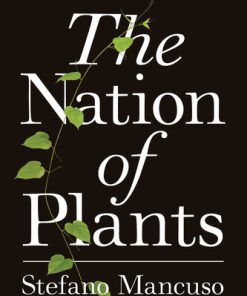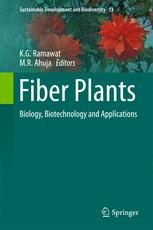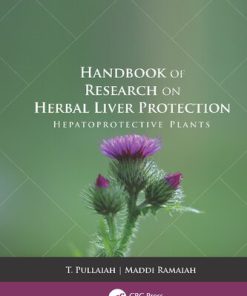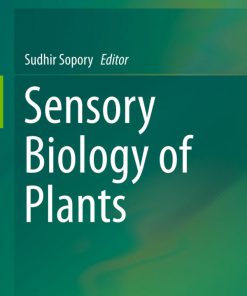Plants on Plants The Biology of Vascular Epiphytes 1st Edition by Gerhard Zotz 3319392370 9783319392370
$50.00 Original price was: $50.00.$25.00Current price is: $25.00.
Plants on Plants The Biology of Vascular Epiphytes 1st Edition Gerhard Zotz – Ebook PDF Instant Download/DeliveryISBN: 3319392370 9783319392370
Full download Plants on Plants The Biology of Vascular Epiphytes 1st Edition after payment.
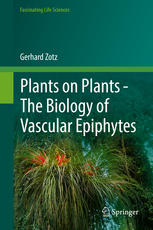
Product details:
ISBN-10 : 3319392370
ISBN-13 : 9783319392370
Author: Gerhard Zotz
This book critically reviews advances in our understanding of the biology of vascular epiphytes since Andreas Schimper’s 1888 seminal work. It addresses all aspects of their biology, from anatomy and physiology to ecology and evolution, in the context of general biological principles. By comparing epiphytes with non-epiphytes throughout, it offers a valuable resource for researchers in plant sciences and related disciplines. A particular strength is the identification of research areas that have not received the attention they deserve, with conservation being a case in point. Scientists have tended to study pristine systems, but global developments call for information on epiphytes in human-disturbed systems and the response of epiphytes to global climate change.
Plants on Plants The Biology of Vascular Epiphytes 1st table of contents:
1: Introduction
1.1 What Is an Epiphyte?
1.2 Other Forms of Structurally Dependent Plants
1.3 Other Classification Schemes
Box 1.1 Different classification schemes for epiphytes (after Benzing 1990, modified)
1.4 Epiphytes: A Life Form?
1.5 Why Conquer Trees?
References
2: Epiphyte Taxonomy and Evolutionary Trends
2.1 Taxonomic Participation
2.1.1 Plant Families with a Substantial Number of Vascular Epiphytes
Box 2.1 Epiphytes and Lithophytes
2.1.2 Future Changes in the Proportion of Epiphytic Taxa
Box 2.2 Canopy Access
2.2 The Conquest of Tree Canopies: “Up´´ and Sometimes “Down´´
2.3 How Biased Is Our Current View on Epiphytes?
References
3: Biogeography: Latitudinal and Elevational Trends
3.1 Latitudinal Trends
Box 3.1 Comparing Species Richness Patterns of Epiphytic and Terrestrial Ferns Along Elevational and
3.2 Elevational Trends
3.3 Diversity Patterns Within the Tropics
References
4: Functional Anatomy and Morphology
4.1 Plant Size
Box 4.1 Life form and Plant Size (Gerhard Zotz, Niklas Buhk, and Christoph Hahn)
4.2 Shoot Architecture
4.3 Gametophytes of Epiphytic Ferns
4.4 Leaves
4.5 A Special Case: Heteroblasty
4.6 Roots
4.7 Seed Size and Seed Morphology
References
5: Physiological Ecology
Box 5.1 Size-Related Changes in Foliar delta13C Values of Vascular Epiphytes (Gerold Schmidt and Ger
5.1 The Physical Setting
5.2 Plant Water Relations
5.3 Temperature and Plant Function
5.4 Mineral Nutrition
5.4.1 Nutrients in the Forest Canopy
5.4.2 Nutrient Uptake
5.4.3 Nutrient Concentrations in Tissue of Vascular Epiphytes
Box 5.2 Luxury Consumption in Epiphytic Bromeliads (Uwe Winkler and Gerhard Zotz)
5.4.4 Reproductive Investment
5.4.5 Associations with Fungi and Cyanobacteria
5.4.6 Special Nutritional Modes Related to Animals
5.4.7 Intraspecific Variation in Hemiepiphytes and Facultative Epiphytes
5.5 Photosynthesis, Carbon Gain, and Growth
Box 5.3 CAM Biomass in Epiphytes and Terrestrial Plants
5.5.1 Foliar Carbon Gain
5.5.2 Carbon Gain by Non-foliar Organs
5.5.3 Whole Plant Carbon Budgets
5.5.4 Light Flecks and Carbon Gain
5.5.5 Photoinhibition
5.5.6 Growth
Box 5.4 Growth Analysis in Vriesea sanguinolenta (Stefan Wester, Cord Mikona, and Gerhard Zotz)
5.5.7 Atmospheric CO2, Net CO2 Uptake, and Growth
References
6: Population Biology
6.1 Diaspores
6.2 Germination and Establishment
Box 6.1 Light Quality and Germination in Epiphytic Bromeliads (Eva-Maria Voßmann, Stefan Wester, an
6.3 Growth and Survival
6.4 Reproduction
6.5 Survival on the Ground
6.6 Comparative Plant Demography
Box 6.2 Population Matrix Analysis of an Epiphytic Orchid
6.7 Metapopulations
References
7: Epiphyte Communities
Box 7.1. Sampling Epiphyte Communities
7.1 The Host Tree
7.1.1 Host Tree Identity
7.1.2 Host Tree Size
7.1.3 Host Tree Phenology
7.2 Community Composition and Structure
Box 7.2. The San Lorenzo Crane Plot
7.2.1 Vertical Structure
7.2.2 Horizontal Structure
7.3 Community Dynamics
7.3.1 Succession
7.3.2 Disturbance
References
8: Interactions with Other Organisms
8.1 Interactions with the Host Tree
8.2 Interactions Among Epiphytes and With Other Structurally Dependent Plants
8.3 Interactions with Animals
8.3.1 Herbivory
8.3.2 Pollination
8.3.3 Dispersal
8.3.4 Diffuse Interactions
Box 8.1. Epiphytes and Spider Assemblages (Sabine Armsen and Gerhard Zotz)
8.3.5 Ant Gardens and Ant-House Plants
8.3.6 Phytotelmata and Biotic Diversity in the Forest Canopy
8.4 Interactions with Fungi
References
9: The Role of Vascular Epiphytes in the Ecosystem
9.1 Carbon Stores and Carbon fluxes
9.2 Forest Hydrology
9.3 Nutrient Stores and Fluxes
References
10: Epiphytes and Humans
10.1 Land-Use Change
10.2 Human Health Issues
10.3 Epiphytes as Ornamentals and Non-Timber Forest Products
10.4 Invasiveness
10.5 Epiphyte Conservation in Times of Global Change
References
11: Epilogue: The Epiphyte Syndrome
People also search for Plants on Plants The Biology of Vascular Epiphytes 1st:
what plants are epiphytes
why do epiphytes grow on other plants
plants with vascular tissue
vascular biology plants
plants with vascular system
Tags: Plants, The Biology, Vascular Epiphytes, Gerhard Zotz
You may also like…
Biology and other natural sciences - Ecology
Biology and other natural sciences - Ecology
The Nation of Plants 1st Edition by Stefano Mancuso ISBN 9781635421002 1635421004
Uncategorized
Science (General)
Housekeeping & Leisure - Gardening
The Healing Power of Plants The Hero House Plants that Love You Back Fran Bailey
Medicine - Natural Medicine
Handbook of Research on Herbal Liver Protection: Hepatoprotective Plants 1st Edition T Pullaiah
Engineering
Biology and other natural sciences - Plants: Agriculture and Forestry




